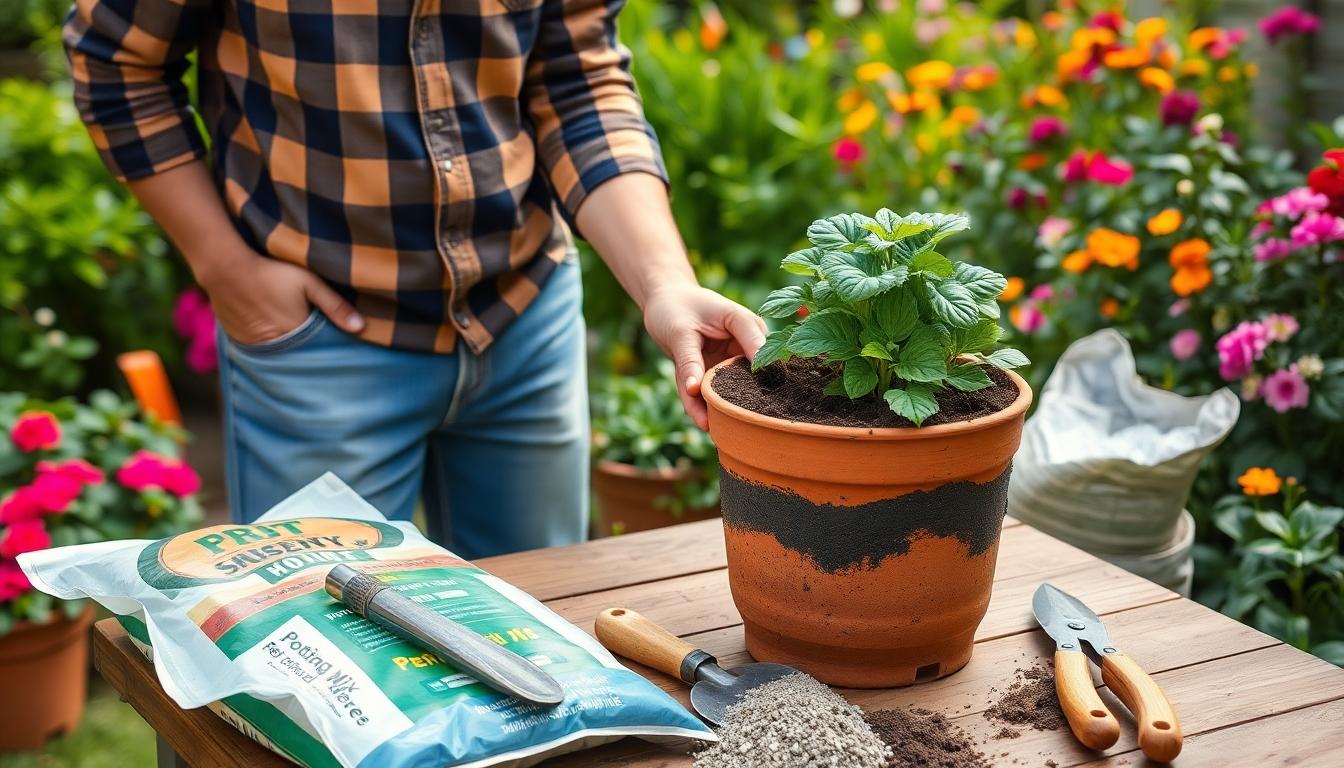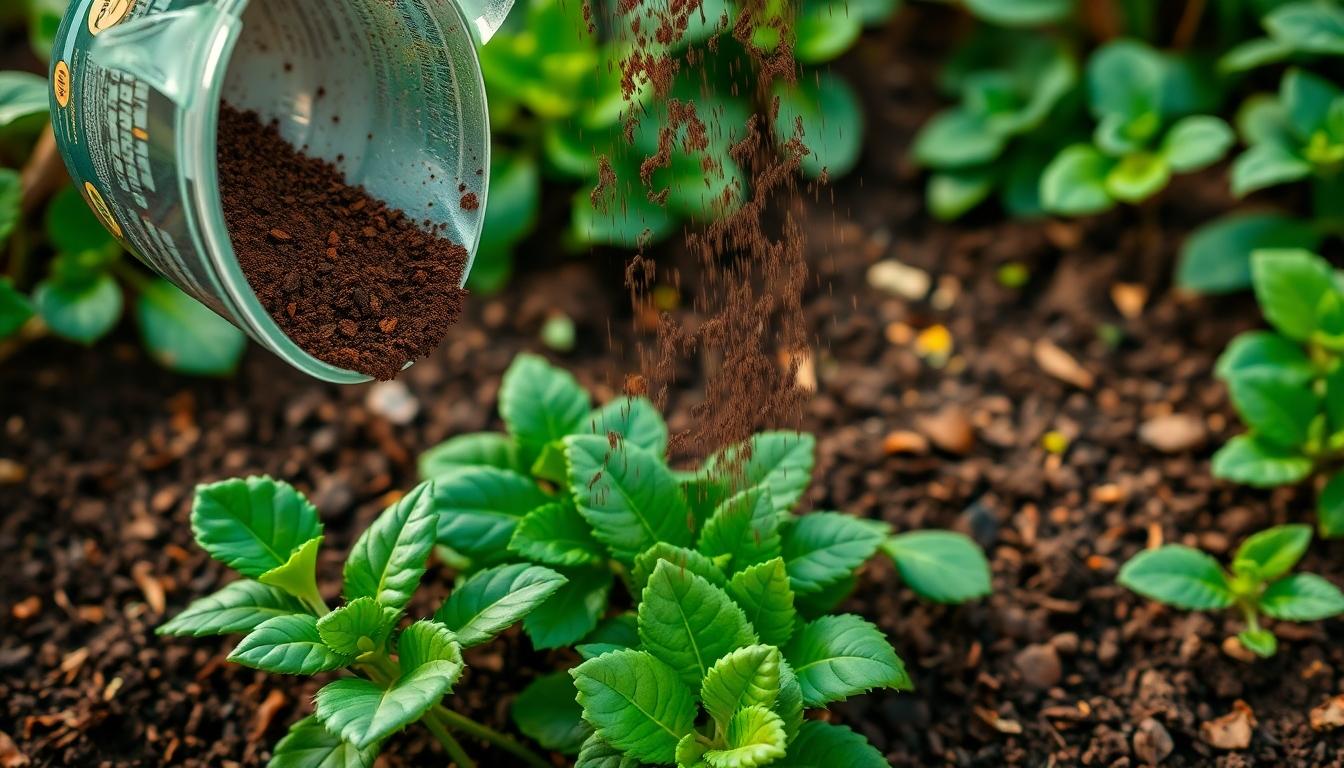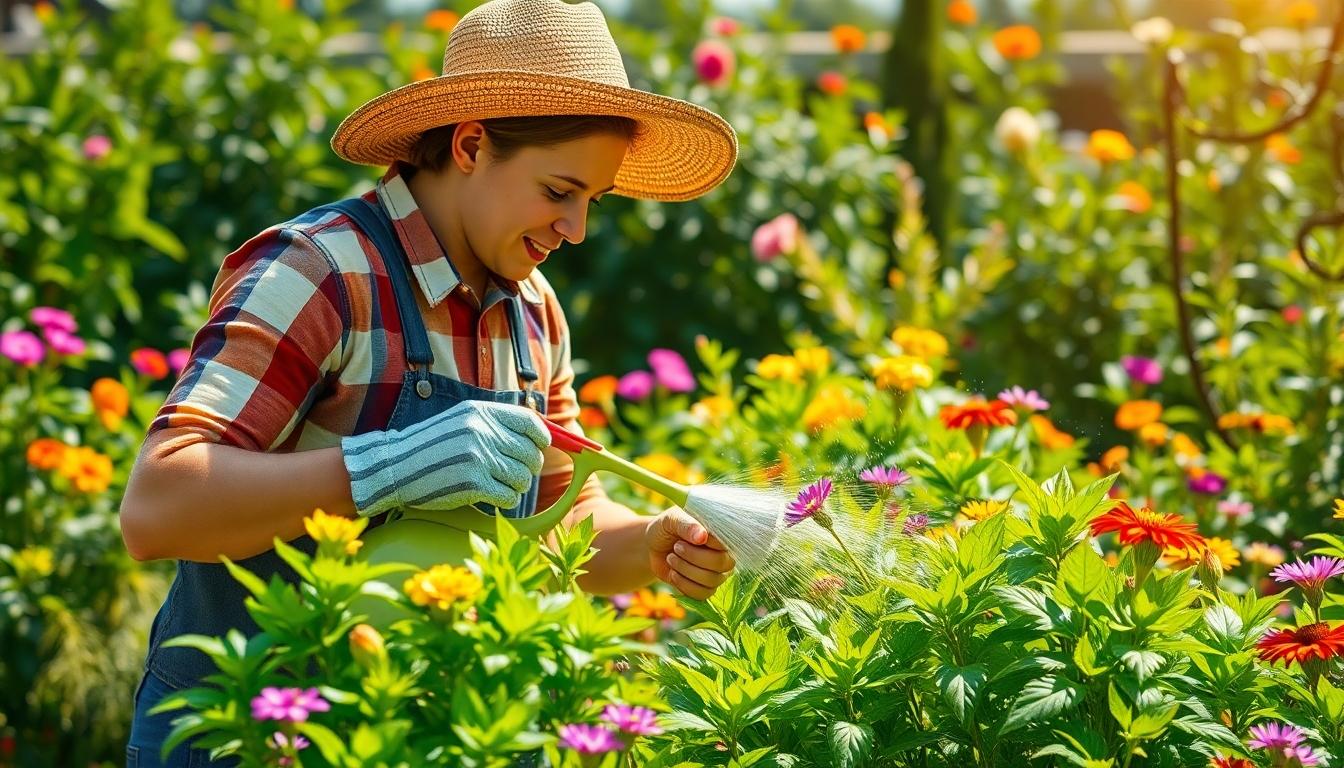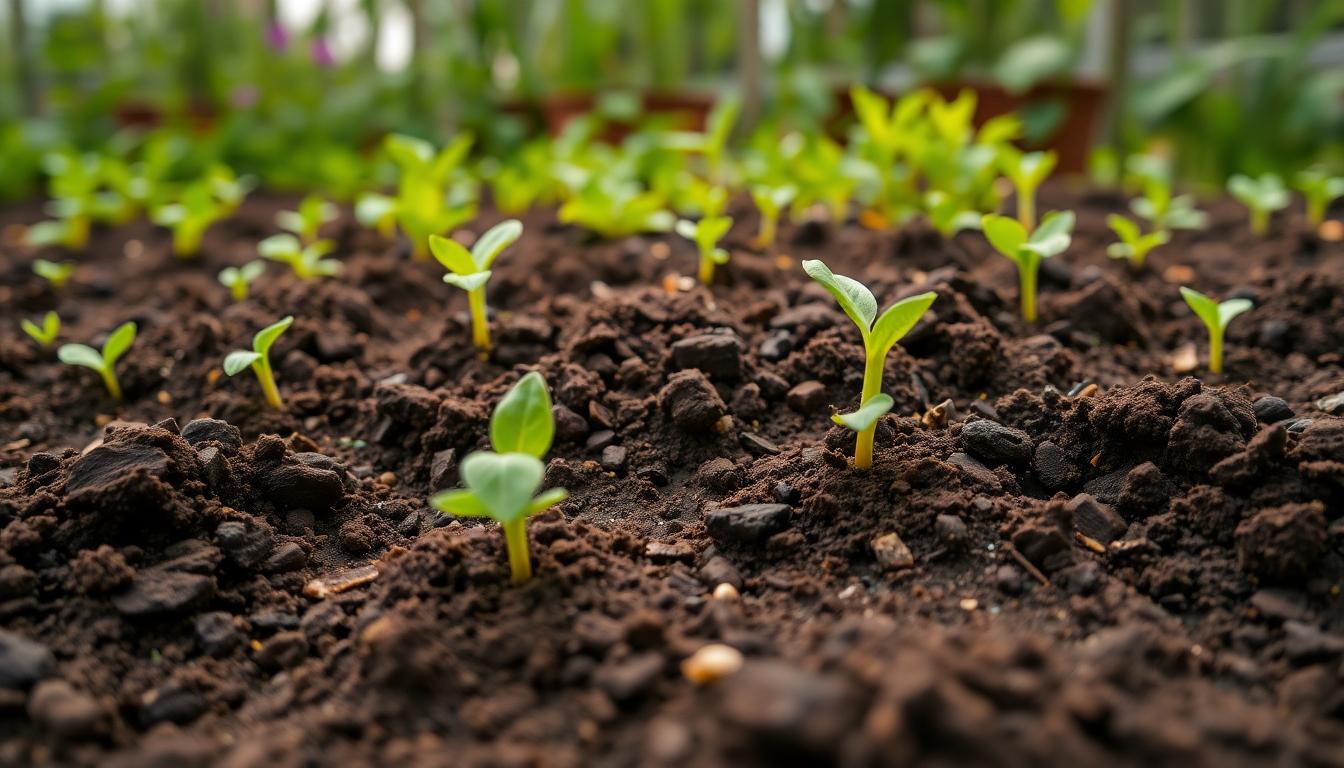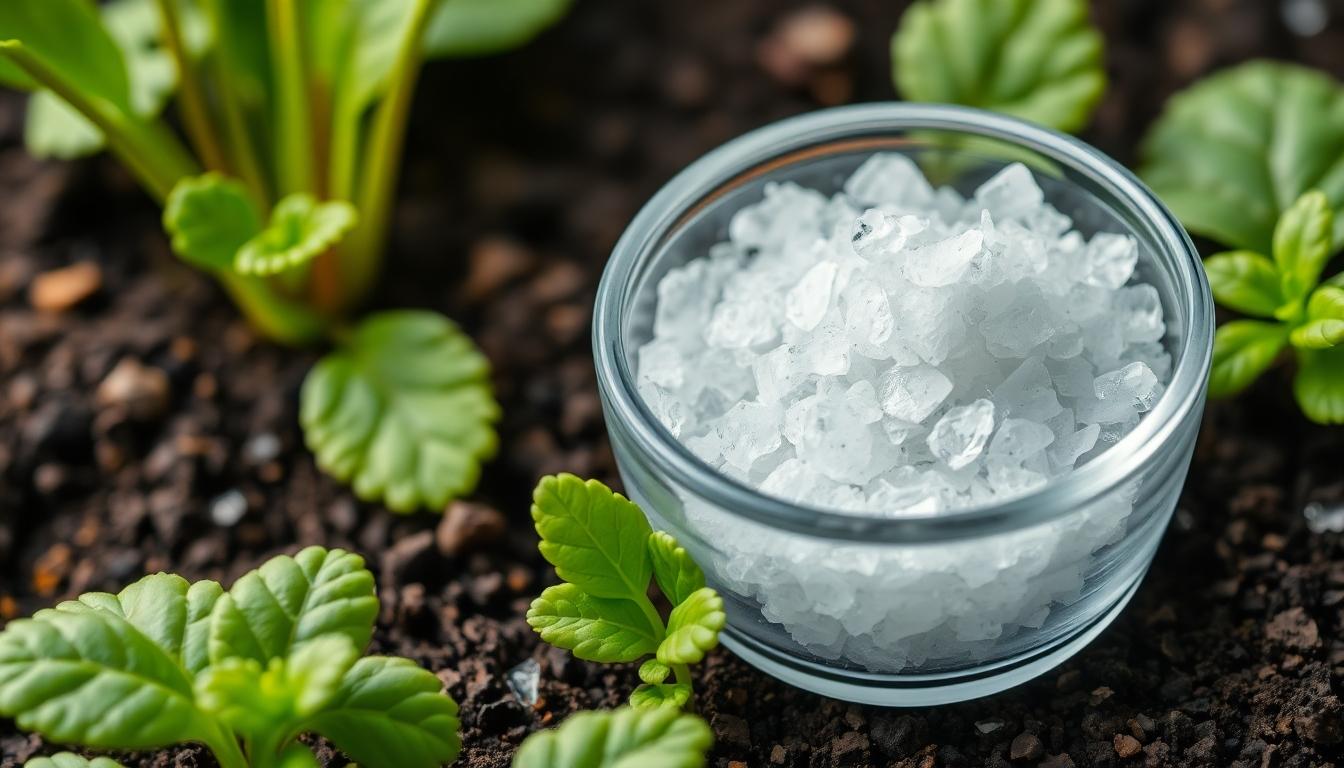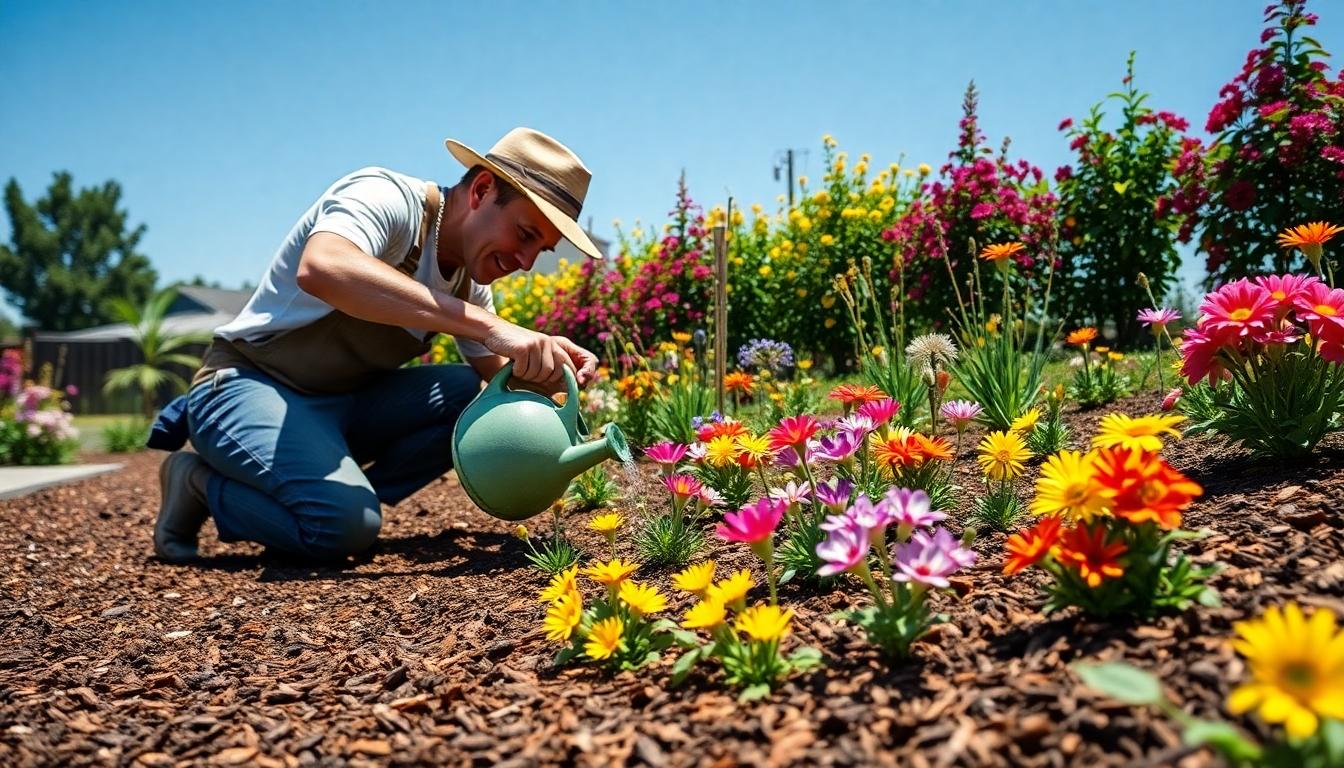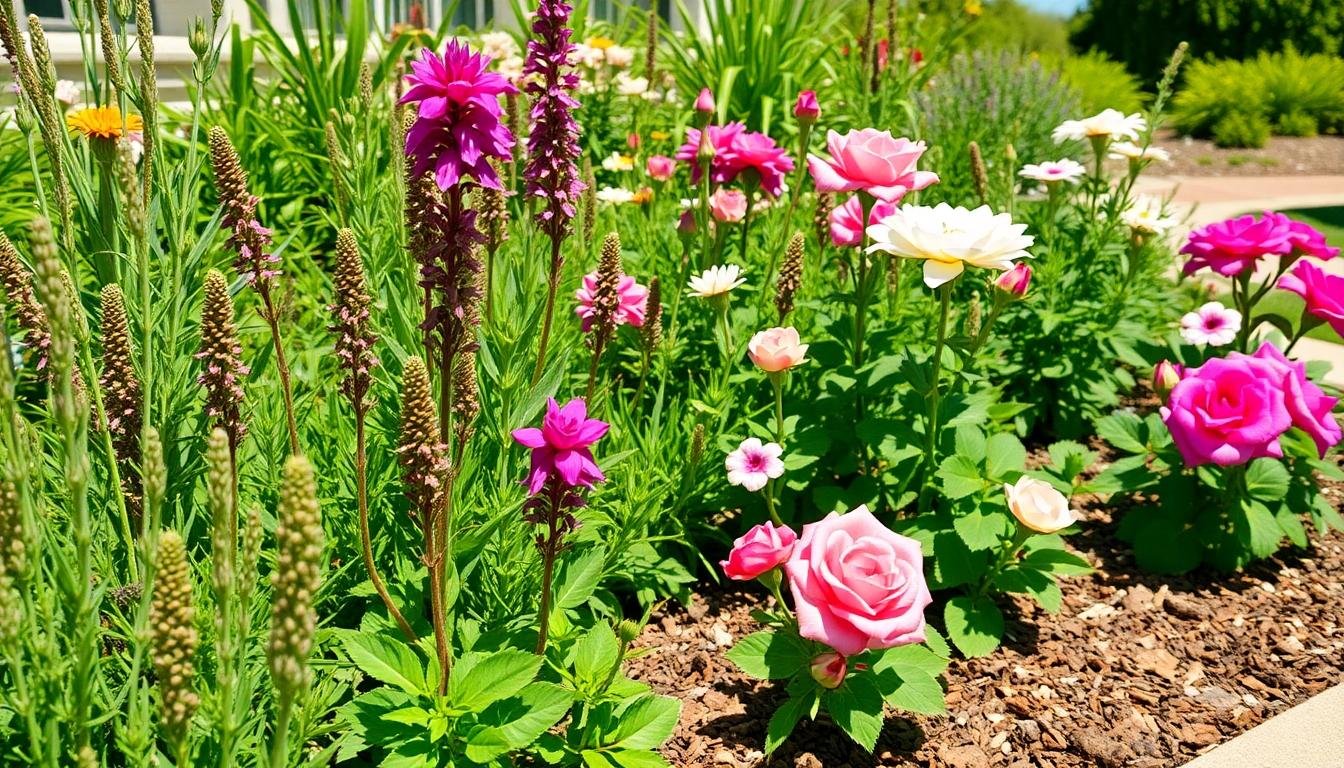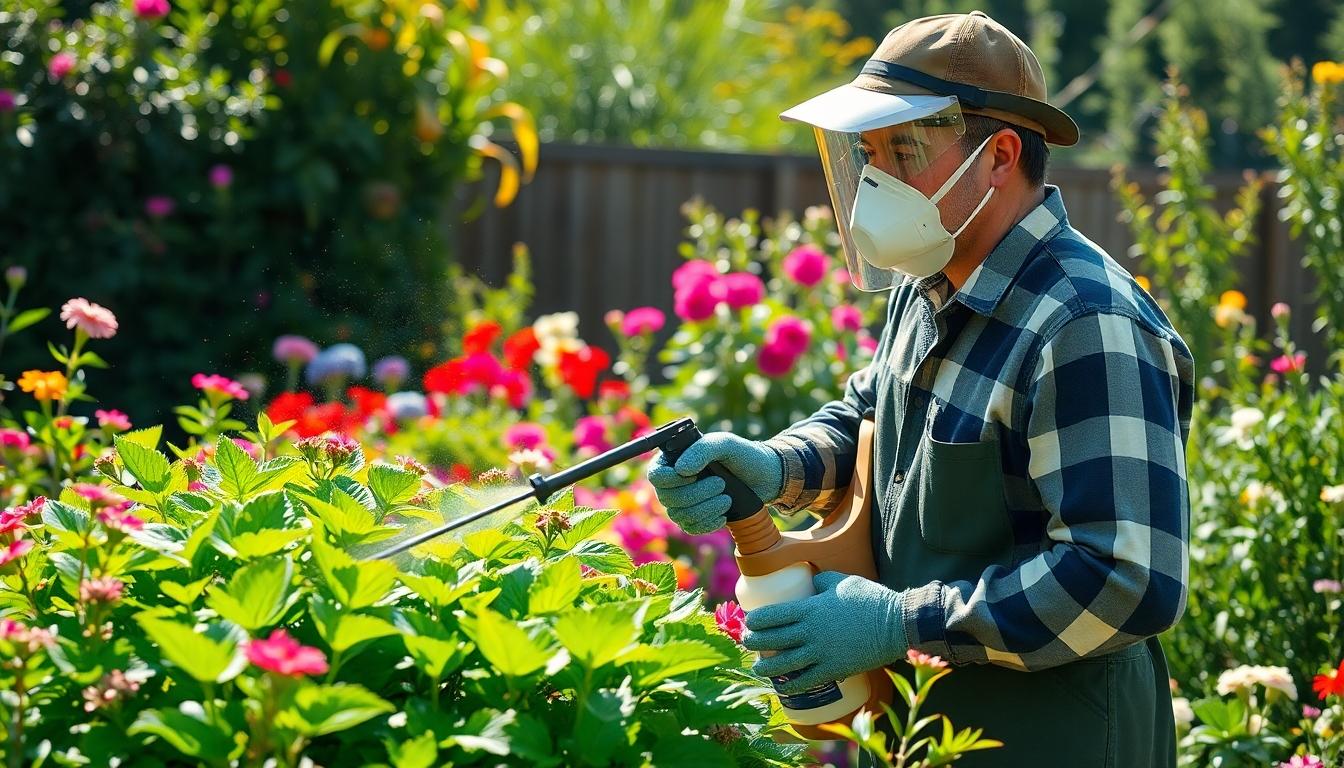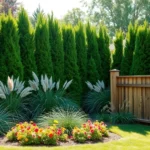Gardening myths have circulated for generations, passed down from one well-meaning green thumb to another. We’ve all heard them – coffee grounds repel slugs, talking to plants helps them grow, and the full moon is the best time for planting. But how many of these popular beliefs actually hold water?
In our search for thriving gardens, we’ve discovered that many widely accepted gardening “truths” are nothing more than folklore. These misconceptions can waste your time, money, and energy – potentially sabotaging your gardening success. We’ve compiled and tested the most common gardening myths to separate fact from fiction once and for all.
10 Common Gardening Myths Busted: Separating Fact From Fiction
1. “Adding Sugar to Planting Holes Boosts Flower Production”
This widely circulated myth claims that adding sugar to planting holes increases flower production. Scientific studies show no direct benefit of sugar for plant growth or flowering. Plants generate their own sugars through photosynthesis and don’t effectively absorb refined sugar through their roots. Instead of sugar, amend soil with organic compost or appropriate fertilizers based on soil tests for genuine flowering improvements.
2. “Coffee Grounds Acidify Soil Immediately”
Many gardeners believe that coffee grounds instantly acidify soil, making them perfect for acid-loving plants like azaleas. Fresh coffee grounds are indeed acidic (pH 5.5-6.8), but used grounds become nearly neutral after brewing. Research from Oregon State University reveals that grounds decompose slowly and have minimal immediate impact on soil pH. For fast pH adjustment, use products specifically designed for soil acidification like elemental sulfur or aluminum sulfate.
3. “Gravel in Pot Bottoms Improves Drainage”
The practice of adding a layer of gravel or stones at the bottom of containers supposedly improves drainage. Physics proves this myth false through a principle called a “perched water table.” Adding gravel actually raises the saturation zone in pots, keeping more water near plant roots. For better drainage, select appropriate potting mixes and containers with sufficient drainage holes instead of wasting space with rocks.
4. “Epsom Salt Cures All Garden Problems”
Epsom salt (magnesium sulfate) is often touted as a miracle cure for everything from tomato production to pest control. Scientific evidence indicates Epsom salt only benefits plants with confirmed magnesium deficiencies, which are relatively rare in most garden soils. Unnecessary application can create nutrient imbalances and potentially harm beneficial soil microorganisms. Soil testing should always precede any supplemental treatments.
5. “Watering Plants During Sunny Days Burns Leaves”
The belief that water droplets act as magnifying glasses, focusing sunlight and burning leaves, persists among gardeners. Research from Budapest’s Eötvös Loránd University confirms that water droplets on smooth leaves don’t focus enough light to cause burning. Environmental factors like heat stress or drought often cause leaf damage mistakenly attributed to midday watering. Morning watering remains ideal not to prevent burning but to reduce fungal disease and evaporation.
6. “Organic Pesticides Are Always Safe”
The assumption that “organic” automatically means “safe” represents a dangerous oversimplification. Organic pesticides like rotenone, pyrethrum, and copper sulfate can be toxic to beneficial insects, aquatic life, and even humans if misused. Studies from agricultural research stations demonstrate that proper application methods matter more than whether a product is synthetic or organic. Always follow label instructions regardless of a product’s origin.
7. “Adding Rocks to Soil Improves Drainage”
Gardeners often till rocks into heavy clay soils believing this improves drainage. Agricultural research indicates mixing rocks into soil creates an environment similar to concrete rather than improving soil structure. Rocks displace valuable soil volume and can make cultivation more difficult. Adding organic matter like compost or using raised beds provides much more effective drainage answers for challenging soils.
8. “Marigolds Repel All Garden Pests”
While often recommended as universal pest deterrents, marigolds have exact rather than general pest-repelling properties. Research supports their effectiveness against certain nematode species when used as green manure, but they don’t significantly impact most above-ground pests like aphids or Japanese beetles. French marigold (Tagetes patula) varieties show the strongest nematode-suppressing properties, but expecting one plant to solve all pest problems is unrealistic.
9. “Native Plants Need No Maintenance”
The myth that native plants are maintenance-free ignores their natural growing conditions. Native plants are adapted to local environments but still require appropriate care, especially during establishment. Studies from botanical gardens demonstrate that even regionally appropriate plants need regular watering during their first seasons and may require ongoing maintenance like pruning or division. Understanding a plant’s exact needs matters more than simply choosing native species.
10. “Vitamin B1 Prevents Transplant Shock”
Vitamin B1 (thiamine) products are marketed as preventing transplant shock, but research from the University of California shows they provide no important benefits over regular watering. Plants manufacture their own thiamine and don’t need supplementation. Transplant success depends primarily on proper root handling, appropriate planting depth, adequate watering, and weather conditions during establishment. Save your money and focus on proven transplanting techniques.
Myth 1: Adding Gravel to Pots Improves Drainage
For decades, gardeners have faithfully placed a layer of gravel or pottery shards at the bottom of containers, believing this practice improves drainage and prevents root rot. Research has proven this widely accepted technique doesn’t just fail to help—it actually makes drainage worse.
The Science Behind Container Drainage
Water moves through potting soil via capillary action, creating a natural flow that’s disrupted when different materials are layered in containers. Scientific studies confirm that adding gravel creates a “perched water table” where moisture becomes trapped in the soil directly above the gravel layer rather than draining away. This phenomenon occurs because water won’t move from fine-textured material (soil) into coarser material (gravel) until the soil is completely saturated. Uniform soil porosity throughout the entire container ensures consistent drainage patterns that benefit plant roots and reduce rot risks. The physics of water movement demonstrates why this long-standing practice persists even though contradicting the basic principles of soil hydrology.
Better Alternatives for Healthy Potted Plants
Creating truly well-draining containers requires smart choices rather than counterproductive gravel layers. Use high-quality potting mix blended with drainage-improving materials like perlite or horticultural grit that maintain consistent porosity throughout the pot. Ensure your containers have adequate drainage holes that remain unblocked by soil or other materials. Consider fabric pots or air-pruning containers that naturally improve soil aeration and prevent water accumulation around roots. Select appropriate pot sizes for your plants to avoid excessive soil volume that retains too much moisture. Monitor watering frequency based on plant needs rather than rigid schedules, adjusting for seasonal changes and plant growth stages. These evidence-based approaches address drainage concerns while avoiding the scientifically disproven myth of beneficial gravel layers.
Myth 2: Coffee Grounds Are an Instant Soil Acidifier
How Coffee Grounds Actually Affect Your Soil
Coffee grounds’ reputation as a quick soil acidifier doesn’t match scientific reality. While fresh coffee grounds do have an acidic pH between 5 and 5.5, used coffee grounds (the ones most gardeners actually apply) are nearly neutral with a pH of 6.5-6.8 after brewing. Research consistently shows that any acidifying effect from coffee grounds is minimal and short-lived, making them unreliable for meaningfully lowering soil pH.
The benefits of coffee grounds come from other properties entirely. They enhance organic matter content and boost soil microbial activity when used appropriately. Coffee grounds can suppress certain plant pathogens and increase carbon content in your garden soil. But, applying uncomposted grounds directly to soil may temporarily reduce nitrogen availability to plants and release phytotoxic compounds like phenols when used in high concentrations.
For best results, coffee grounds should be composted before garden application. Composting neutralizes their acidity further, typically resulting in a pH between 6 and 7. Even with composting, grounds should make up no more than 20% of your soil volume to avoid potential nutrient imbalances.
Proper Methods for Adjusting Soil pH
If you genuinely need to modify your soil’s pH, several reliable methods exist based on soil science. For acidifying alkaline soil, elemental sulfur or ammonium-based fertilizers work effectively. These materials undergo gradual microbial conversion in the soil, releasing acidity over time for sustainable pH adjustment.
Raising soil pH requires limestone application (calcium carbonate), which neutralizes acidity and increases alkalinity. Different forms of lime work at varying speeds, with finely ground products acting more quickly than coarse materials.
Soil testing should always precede any pH adjustment attempts. Testing provides precise measurements of your current pH and allows for calculated amendments based on your exact soil conditions. Many university extension offices offer affordable soil testing services with targeted recommendations for your garden’s needs.
Using coffee grounds in your compost pile or as a light soil amendment offers excellent benefits for improving soil structure and organic matter content, but relying on them as a soil acidifier will likely lead to disappointment and potentially inadequate growing conditions for acid-loving plants.
Myth 3: Watering Plants During Sunny Days Burns Leaves
Understanding Water Droplets and Sunlight
Many gardeners avoid midday watering based on the belief that water droplets act as magnifying glasses, focusing sunlight and scorching leaves. Research has thoroughly debunked this persistent myth, showing that under normal garden conditions, water droplets rarely cause leaf burn. The idea that water droplets function as tiny lenses that concentrate sunlight enough to damage plant tissue simply doesn’t hold up to scientific scrutiny. Natural leaf textures, slight movements from wind, and rapid evaporation all prevent water from creating any important focusing effect on leaf surfaces. What gardeners often misidentify as “sunburn” from water droplets is actually dehydration damage occurring when plants can’t maintain adequate moisture during intense heat.
Best Practices for Watering Your Garden
Timing matters for efficient watering, with early morning or evening being optimal to reduce evaporation losses. Contrary to popular belief, midday watering won’t burn your plants, though water will evaporate more quickly during peak sunlight hours.
Direct your water to the soil rather than spraying leaves whenever possible. This approach ensures moisture reaches roots efficiently while minimizing potential fungal problems that can develop on consistently wet foliage.
Water deeply but infrequently to encourage stronger root development and drought resistance. Shallow, frequent watering leads to weak surface roots that can’t sustain plants during dry periods.
Focus on soil moisture as your primary concern rather than worrying about water droplets on leaves. While keeping foliage relatively dry helps prevent disease issues, occasional water on leaves won’t cause sunburn damage. The real threat to plants comes from inadequate hydration during hot weather, not from water droplets acting as magnifying glasses.
Myth 4: More Fertilizer Equals Faster Growth
Many gardeners believe that applying extra fertilizer will supercharge their plants’ growth, but this common misconception can actually harm your garden. Contrary to popular belief, excessive fertilizer application doesn’t enhance plant growth and often leads to important problems for both plants and the environment.
The Dangers of Over-Fertilization
Over-fertilizing disrupts the delicate balance of soil biology and creates many problems for your plants. Excess nutrients, particularly nitrogen, can “burn” roots and foliage, resulting in stunted growth rather than the lush vegetation gardeners hope for. Plants exposed to fertilizer overload typically show reduced resilience to pests and diseases, making them more vulnerable in your garden. Environmental concerns also arise when unused nutrients leach into groundwater and nearby ecosystems, where they harm aquatic life and contribute to pollution. Salt buildup from repeated over-application creates toxic soil conditions that few plants can tolerate. Research confirms that this well-intentioned practice often backfires, leaving gardeners with weaker plants even though their efforts to boost growth.
Creating a Balanced Feeding Schedule
Soil testing forms the foundation of responsible fertilization, allowing you to identify exact nutrient deficiencies before applying any amendments. Healthy soils often require no supplemental fertilizers at all, making testing an essential first step that saves time and resources. We recommend using slow-release organic fertilizers with balanced NPK ratios (such as 6-2-4) that provide nutrients gradually without overwhelming plant systems. Timing plays a crucial role in fertilization effectiveness, with applications being most beneficial during active growth phases in spring and early summer. Applications made late in the growing season often prove ineffective for many plants and waste resources.
Following label instructions strictly helps prevent overuse, as manufacturers determine safe application rates through extensive testing. Gardeners should prioritize building soil health through compost and microbial amendments rather than relying heavily on synthetic inputs. These organic approaches improve soil structure and nutrient availability while avoiding the risks associated with chemical fertilizers. Targeted application methods that deliver nutrients directly to plant roots minimize waste and environmental impact compared to broadcast spreading techniques.
Myth 5: Planting by the Moon Phases Improves Yields
Many gardeners swear by lunar gardening calendars, claiming that aligning planting activities with moon phases leads to better harvests. Let’s examine what science actually tells us about this age-old practice.
Examining the Scientific Evidence
Scientific research consistently contradicts the notion that lunar phases impact plant growth or yields. A comprehensive 2021 review from the University of Valencia analyzed more than 100 scientific studies and found no evidence connecting moon cycles to agricultural outcomes. Multiple disciplines—including biology, agronomy, and physics—have failed to substantiate claims that moonlight or gravitational pull affects germination rates, root development, or crop productivity. Traditional folklore often suggests planting above-ground crops during a waxing moon and root crops during a waning moon, but these recommendations lack empirical support in controlled studies. Even though the persistence of lunar planting calendars in gardening literature, no reliable scientific evidence demonstrates that synchronizing gardening activities with moon phases produces superior results.
What Actually Determines Garden Success
Instead of focusing on celestial bodies, we should direct our attention to evidence-based factors that genuinely influence plant growth:
- Soil quality provides the foundation for plant health through proper nutrient density, pH balance, and organic content that supports root development.
- Water management ensures plants receive consistent moisture without becoming waterlogged, requiring attention to both irrigation frequency and drainage capabilities.
- Climate conditions significantly impact growth, with temperature ranges, sunlight exposure, and seasonal adaptability determining which plants will thrive in your exact environment.
- Pest control strategies protect plants from yield-reducing damage caused by insects, animals, and pathogens that can devastate unprotected gardens.
- Seed and plant health begins with selecting genetically vigorous, disease-resistant varieties appropriate for your growing zone.
Peer-reviewed agricultural studies consistently highlight these tangible factors as the true determinants of gardening success. While lunar planting traditions may connect us to historical gardening practices, our energy and resources are better invested in soil improvement, proper watering techniques, and appropriate plant selection rather than synchronizing activities with the moon’s phases.
Myth 6: Epsom Salt Is a Miracle Garden Amendment
Many gardeners swear by Epsom salt as a cure-all for garden ailments, but science tells a different story. The truth about this common household product might surprise you.
The Limited Benefits of Magnesium Sulfate
Epsom salt, chemically known as magnesium sulfate, provides two essential plant nutrients: magnesium and sulfur. These nutrients play critical roles in chlorophyll production and help plants with nutrient uptake. But, the benefits of Epsom salt are highly conditional rather than universal. Soil-exact efficacy is a major consideration—Epsom salt only proves useful when a soil test confirms an actual magnesium deficiency, which is surprisingly rare in most lawns and gardens. Contrary to popular belief, it’s not a miracle cure for all plant problems. Overusing this amendment can seriously disrupt your soil’s nutrient balance, potentially causing deficiencies in potassium, iron, or boron. Excessive magnesium applications can also lead to salt damage in plants, creating more problems than they solve.
When Epsom Salt Is Actually Useful
Confirmed magnesium deficiencies represent the primary situation where Epsom salt applications make sense. Plants showing classic magnesium deficiency symptoms—yellowing leaves with green veins—may benefit from small, targeted applications. Exact crops like peppers and roses have shown enhanced flowering in some tests when treated with Epsom salt. These effects, but, are inconsistent across studies and likely reflect optimal nutrient conditions rather than universal benefits. Experts including Clint Waltz from the University of Georgia emphasize the importance of soil testing before application to avoid unintended harm to your garden. Most well-maintained gardens already receive adequate magnesium from compost and regular fertilizers, making additional Epsom salt applications unnecessary for general use. Testing your soil first will save you time, money, and potentially prevent plant health issues caused by nutrient imbalances.
Myth 7: Native Plants Don’t Need Any Care
Native plants have earned a reputation for being “plant and forget” options, but this oversimplification leads many gardeners astray. While they certainly require less maintenance than exotic species, the notion that native plants need zero care is simply untrue.
Understanding Native Plant Maintenance
Native plants do require less long-term maintenance thanks to their adaptation to local climates, but they aren’t completely self-sufficient. New plantings need regular watering until their root systems fully establish, a process that typically takes 1-3 growing seasons. After establishment, most native species thrive without supplemental watering or fertilization, especially when matched to their preferred site conditions. The beauty of natives lies in their resilience once established, not their immunity to all care requirements. Some maintenance tasks remain necessary, including occasional deadheading, pruning, or thinning to prevent excessive self-seeding or overgrowth. These minimal interventions help maintain the health and appearance of your native plant garden while allowing it to function as a natural network.
Establishing Native Plants Successfully
Successful native plant gardens begin with proper site preparation. We recommend matching plants to existing soil, light, and moisture conditions rather than trying to alter your garden to fit unsuitable plants. This strategic approach significantly reduces plant stress and water requirements from the start.
Watering practices make a crucial difference during the establishment phase. Native plants need consistent moisture for their first 1-2 years, after which you can gradually reduce irrigation as their root systems develop. This initial investment in regular watering pays dividends in long-term plant health and reduced maintenance.
Mulching serves multiple purposes in native plant beds. A 2-3 inch layer helps retain soil moisture, suppresses competing weeds, and regulates soil temperature—all factors that support successful establishment.
Several key maintenance practices keep native plantings thriving:
- Avoid fertilizers and pesticides since natives naturally flourish in nutrient-poor soils and attract beneficial insects and birds that control pests.
- Cut back perennials in late winter or early spring to promote healthy new growth rather than pruning in fall.
- Leave seed heads and leaf litter in place during fall and winter to provide valuable habitat and food sources for wildlife and pollinators.
Drought-tolerant native species further minimize maintenance requirements, but remember that no plant is entirely “care-free.” The time invested in proper plant selection and establishment results in significantly reduced long-term maintenance compared to non-native alternatives.
Myth 8: Drought-Tolerant Plants Never Need Watering
The Truth About Water Requirements
Drought-tolerant plants actually require consistent watering during their establishment phase to develop the deep root systems that will later help them survive dry periods. All plants, even those labeled as “drought-tolerant,” need supplemental irrigation initially because their young roots cannot yet access moisture deep in the soil. These resilient plants typically become water-efficient after 1-2 growing seasons, when they’ve developed adaptations like reducing stomatal openings to limit water loss or altering their morphology to better endure heat. Research confirms that while established drought-tolerant plants can maintain their aesthetic appeal with minimal water, they still require occasional irrigation during extreme or prolonged drought conditions to stay healthy.
Proper Establishment of Drought-Tolerant Gardens
Creating a successful drought-tolerant garden requires proper establishment techniques to ensure plants develop the resilience they need. We recommend providing consistent moisture during the first 1-2 seasons, mimicking natural rainfall patterns with approximately 1 inch of water weekly. Applying organic mulch around plants helps retain soil moisture and significantly reduces evaporation, creating favorable conditions for root development. Selecting appropriate species plays a crucial role in drought tolerance success, with plants like Pikes Peak Purple® penstemon and certain drought-resilient roses (such as ‘ChewPatout’) maintaining visual quality under reduced irrigation conditions. Avoid cultivars like ‘MEIRIFTDAY’ roses, which show poor adaptation to water-limited environments. Gradually reduce watering frequency as your plants mature, allowing them to acclimate to drier conditions and develop their natural drought resistance. While properly established drought-tolerant gardens can thrive with minimal supplemental water, remember that no plant survives indefinitely without some irrigation during severe water deficits.
Myth 9: Adding Sugar to Planting Holes Boosts Growth
The Myth Explained
This popular gardening myth suggests that adding sugar to planting holes will give your plants a growth boost or increase flower production. Many home gardeners have tried this technique after hearing it from well-meaning friends or reading about it in older gardening literature. The practice involves sprinkling regular table sugar into planting holes before adding plants, with the belief that this sweetener will somehow supercharge plant development.
How Sugar Actually Affects Soil Biology
Sugar’s relationship with plants is far more complex than simply boosting growth. When added to soil, sugar primarily feeds soil microorganisms rather than directly nourishing plants. These tiny organisms consume the sugar as an energy source, temporarily increasing their population and activity in the soil network. Microbial communities play essential roles in breaking down organic matter and improving soil health, but their sugar-induced population boom can actually compete with plants for available nitrogen. Scientific research indicates that sugar functions as a signaling molecule within plants, influencing various developmental processes including flowering and growth patterns. The outcomes depend heavily on concentration levels, plant species, and application timing, making it impossible to predict whether sugar will help or hinder plant development in any given situation.
Better Ways to Improve Soil Fertility
Organic compost provides a vastly superior alternative to sugar, offering balanced nutrition that improves soil structure while supporting beneficial microbial activity. Adding well-decomposed compost delivers a complete spectrum of nutrients that release slowly as plants need them, unlike sugar’s one-dimensional approach. Mulching with organic materials like wood chips, straw, or leaf litter helps maintain soil moisture, suppress weeds, and create ideal conditions for soil biology to thrive naturally. Implementing crop rotation practices enhances soil health by reducing pest pressures, increasing nutrient availability, and fostering diverse microbial populations that benefit plant growth. Balanced fertilizers applied according to soil test recommendations ensure plants receive appropriate nutrition without the potential negative consequences of sugar application. These evidence-based approaches address the fundamental needs of plants and soil biology, delivering reliable results that the sugar myth simply cannot match.
Myth 10: Organic Pesticides Are Always Safe
Many gardeners assume that if a pesticide is labeled “organic,” it must be completely safe for humans, pets, and the environment. This widespread misconception can lead to improper handling and overuse of potentially harmful substances.
Understanding Toxicity in All Pesticides
Organic pesticides can pose important health risks even though their natural origins. Research shows that natural insecticides may cause hepatotoxicity, renal toxicity, hematotoxicity, reproductive toxicity, neurotoxicity, and oxidative stress in certain situations. The “organic” label doesn’t automatically guarantee safety, as these products contain compounds specifically designed to kill or repel living organisms. While organic farming typically employs fewer toxic chemicals than conventional methods, organic fields often use similar amounts of pesticides – they’re just generally less toxic alternatives. Many organic-approved substances require careful handling, protective equipment, and proper application techniques to minimize exposure risks. We should always read and follow label instructions for any pesticide product, regardless of its origin.
Integrated Pest Management Approaches
Integrated Pest Management (IPM) offers a more holistic approach to controlling garden pests without excessive reliance on any pesticides. This comprehensive strategy combines biological control, cultural practices, physical barriers, and limited chemical applications as a last resort. The first step in IPM involves accurately identifying the exact pest causing damage, allowing for targeted control methods. Setting action thresholds helps determine when intervention becomes necessary, preventing unnecessary pesticide applications for minor pest issues. Various control techniques can be implemented based on the situation, including introducing beneficial insects, improving plant health through proper care, installing physical barriers, and using pesticides (organic or synthetic) only when other methods prove insufficient. IPM focuses on long-term prevention while minimizing environmental impact and health risks associated with all types of pest control products.
Conclusion: Science-Based Gardening for Better Results
Gardening success relies on facts not folklore. By busting these common myths we’ve highlighted how science-based approaches lead to healthier gardens with less wasted effort and resources.
Next time you’re tempted to add gravel to pots or sprinkle Epsom salt as a cure-all think twice. Question garden advice even when it comes from trusted sources. What worked in someone else’s garden might not work in yours due to different soil conditions climate and plant varieties.
We encourage you to experiment test and observe your own garden’s needs. Soil testing proper watering techniques and understanding plant requirements will always yield better results than following unverified gardening tips. Happy gardening with science on your side!
Frequently Asked Questions
Do coffee grounds really repel slugs in the garden?
No, coffee grounds don’t effectively repel slugs long-term. While slugs initially avoid coffee grounds due to their texture and caffeine content, this effect diminishes quickly as the grounds break down or get wet. For better slug control, try copper barriers, diatomaceous earth, or beer traps instead. Always use integrated pest management approaches rather than relying on a single solution.
Can talking to plants help them grow better?
While it’s a popular belief, scientific evidence doesn’t support that talking directly helps plants grow. However, when you talk to plants, you’re likely paying closer attention to them, which may lead to better care. Plants respond to environmental factors like proper light, water, and nutrients—not human voices. Focus on consistent care practices for healthier plants.
Does adding gravel to the bottom of pots improve drainage?
No, adding gravel actually worsens drainage by creating a “perched water table” where water collects above the gravel layer. For better container drainage, use high-quality potting mix throughout the entire pot and ensure adequate drainage holes. Consider mixing in materials like perlite if additional drainage is needed, and choose the appropriate pot size for your plants.
Are coffee grounds effective at acidifying soil?
Used coffee grounds have minimal, short-lived acidifying effects since they’re nearly neutral (pH 6.5-6.8). Fresh grounds are acidic, but most home gardeners use spent grounds. For reliable soil acidification, use elemental sulfur or aluminum sulfate after proper soil testing. Coffee grounds are better used as a nitrogen-rich compost ingredient than as a pH modifier.
Will watering plants during sunny days burn their leaves?
No, water droplets don’t act as magnifying glasses that burn leaves. What appears as “sunburn” is usually dehydration damage from inadequate moisture during hot weather. Water early morning or evening to reduce evaporation, focus on soil moisture rather than foliage, and water deeply but infrequently to encourage stronger root systems.
Does more fertilizer mean faster plant growth?
No, excessive fertilizer damages plants and disrupts soil biology. Over-fertilization can “burn” roots, make plants vulnerable to pests, and cause environmental harm through runoff. Use slow-release organic fertilizers with balanced NPK ratios according to soil test recommendations. Focus on building soil health with compost rather than relying heavily on synthetic fertilizers.
Does planting by moon phases improve garden yields?
Scientific evidence doesn’t support the claim that moon phase planting improves yields. Successful gardening depends on evidence-based factors like soil quality, proper watering, appropriate climate conditions, effective pest management, and selecting healthy plants. While moon phase gardening has cultural significance, it lacks scientific validation for improving plant growth or productivity.
Is Epsom salt a miracle amendment for all gardens?
No, Epsom salt (magnesium sulfate) provides benefits only when there’s a confirmed magnesium deficiency, which is uncommon in most gardens. Overuse can disrupt nutrient balance and harm plants. Conduct soil testing before application to avoid unnecessary amendments. Most gardens receive adequate magnesium from compost and regular fertilizers.
Do native plants require zero maintenance?
While native plants generally need less maintenance than exotic species, they still require care—especially during establishment. They need regular watering when first planted and some ongoing maintenance like cutting back perennials in late winter or early spring. The main advantage is that established natives typically need less water, fertilizer, and pest control.
Are organic pesticides completely safe to use?
No, organic pesticides can still pose health risks despite their natural origins. They require careful handling and application according to label instructions. The better approach is Integrated Pest Management (IPM), which uses multiple strategies including biological controls, cultural practices, and mechanical methods to minimize pesticide use while effectively managing pests.
Do drought-tolerant plants never need watering?
Drought-tolerant plants require consistent watering during their establishment phase (typically 1-2 years) to develop deep root systems. Once established, they need less frequent watering than conventional plants but still require some irrigation during extreme drought. Use organic mulch to retain soil moisture and gradually reduce watering frequency as plants mature.
Does adding sugar to planting holes boost flower production?
No, adding sugar to planting holes doesn’t boost flowering. While sugar temporarily increases soil microorganism activity, it competes with plants for nitrogen and can actually harm growth. For better flowering, use organic compost, balanced fertilizers based on soil tests, and proper cultural practices like adequate sunlight and appropriate pruning.




